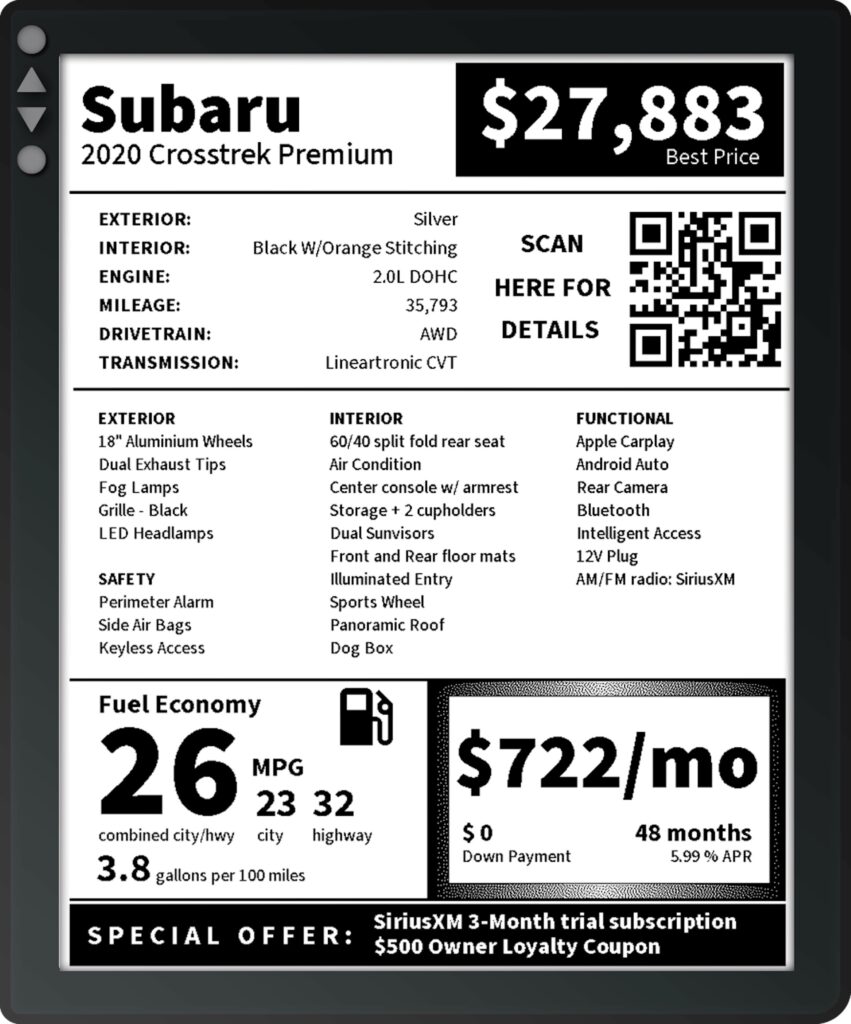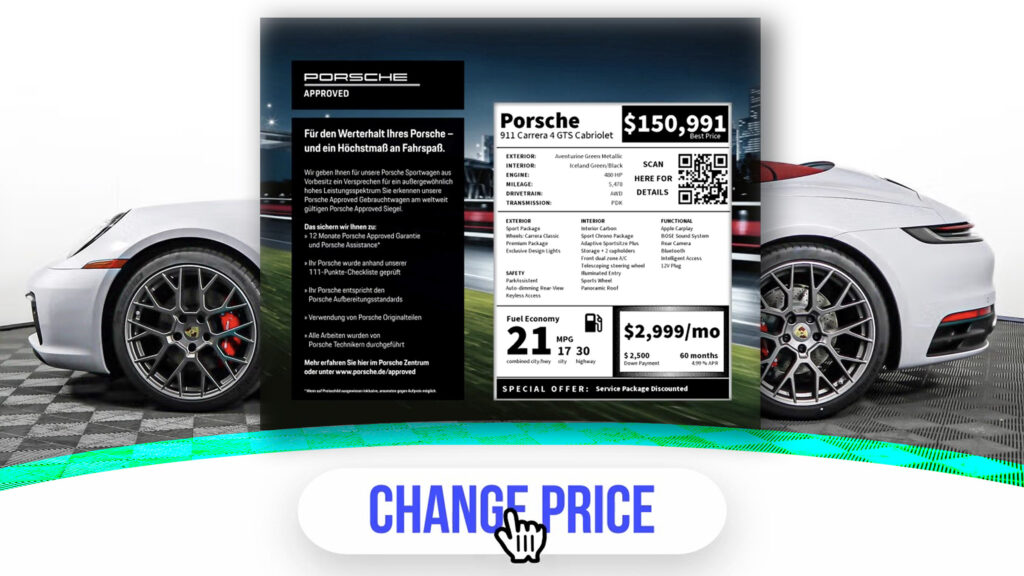- Some American dealers are switching to digital price tags that can be easily updated as spec and prices change.
- DiCoSo, the German company who developed the tech, already has it in 240 European dealers, but now it’s catching on in the US.
- Digital price tags are also coming to other retail businesses, including Kroger, leading to worries about dynamic pricing tactics.
Since 1958 and the passing of that year’s Automobile Information Disclosure Act, all new cars in showrooms have been required to clearly display the price and key information about equipment and delivery charges. We know it as the window sticker, or the Monroney, after the bill’s sponsor, Senator Mike Monroney. But the sticker is coming to a sticky end as it’s being junked for a digital version.
A German firm by the name of Digital Communication Solutions (DiCoSo) created its first digital price tag system in 2018 and has been rolling it out to European auto retailers in the years since. Currently, there are 60,000 price displays in 240 dealerships on the continent, DiCoSo told Auto News.
Related: Some Ford Dealers Want Over $100K For The Mustang Dark Horse
But now it’s starting to make inroads into the US market and has already secured a deal with a Subaru dealer in Salt Lake City, the Auto News report says. DiCoSo wants to get 10,000-15,000 displays into US dealers in its first year, then grow to 50,000 in the coming years.
On some systems customers are able to interact with the digital information, for instance to generate finance quotes, and dealers can use the built-in GPS modules to easily locate their vehicles.
It’s not hard to see why dealers would be interested in the tech. It allows them to easily update pricing, equipment and EPA data on its entire showroom stock with only a few keystrokes. For a big dealer with a stack of cars on display that could mean many hours saved each year.
But other retail sectors are also also adopting the technology and this has led to concerns about how the systems could end up costing consumers more money, The LA Times says. The fear is that giving stores the opportunity to instantly change prices could lead to them introducing dynamic pricing, a strategy used by airlines and music event promotors to tweak prices according to demand.





